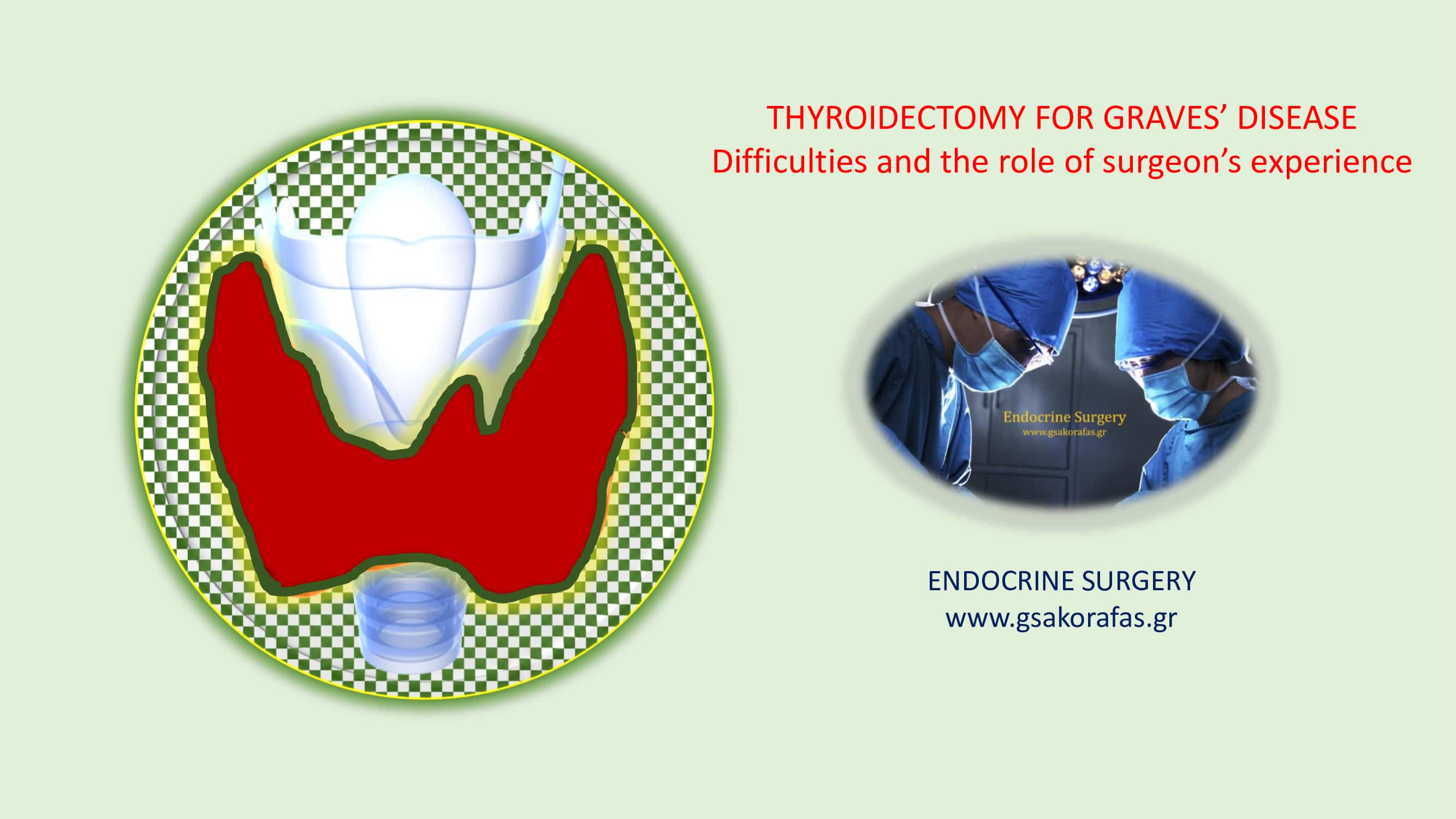Thyroidectomy in patients with Graves’ disease is typically associated with greater technical difficulty, longer operative times and higher morbidity.
This is due to a combination of factors, such as
-friability of thyroid parenchyma
-increased vascularity of the thyroid gland
-increased size of the thyroid (in many cases)-difficulty in dissecting the two thyroid lobes from the trachea (sometimes)
Increased friability and vascularity may explain the increased risk of hemorrhage during surgery.
Moreover, Graves’ disease is associated with higher risk of complications following thyroidectomy, such as:
-hemorrhage
-hematoma / seroma formation
-recurrent laryngeal nerve injury (incidence up to 3.4 %)
-permanent hypoparathyroidism (incidence up to 4 %)
Experience from the part of the operating surgeon is required to decrease postoperative morbidity. High-volume thyroid surgeons can perform thyroidectomy in patients with Graves’ disease with increased safety. Surgeons performing less than 25 thyroidectomies per year have 51 % higher complication rates.
SCNA 2019, Ann Surg 1998

